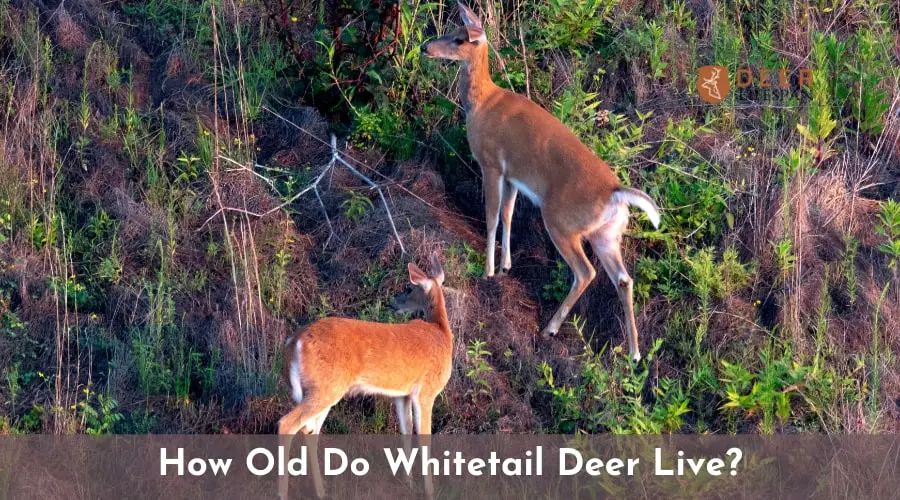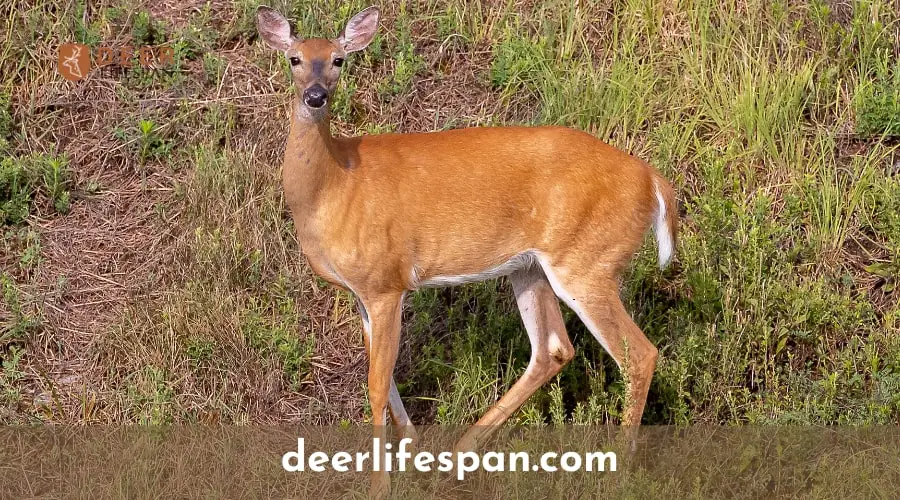According to reports, the lifespan of a whitetail deer depends on several facts. If the question is what the average lifespan of a whitetail deer is, it’s easy to answer. But what are the minimum and maximum ages?
So, how old do whitetail deer live in the wild and captivity? Well, several reasons can affect age. Let’s check out the age and then the reasons that can change the age!
Table of Contents
- Average Lifespan of a Whitetail Deer
- Wondering How Old That Buck Is? Here Are Tips to Quickly Estimate A Bucks Age
- Wrap Up

Average Lifespan of a Whitetail Deer
The answer for this is complicated as different researchers have different opinions. The natural lifespan is 2 to 3 years or in some cases 4. According to the University of Wisconsin-Stevens Point, the lifespan of a whitetail deer is averagely 4.5 years and in cases 5 years.
But if we are talking about the average lifespan, it’s necessary to talk about the genders of the deer separately. For female deer, the average lifespan is about 6.5 years and on the other hand, for the male, it is 2.9 years. Yes, you can see a big difference in the lifespan and there are reasons for this!
On the other hand, if we get on talking about the maximum lifespan, it will be 20 years in the wild. Keep in mind that not a lot of deer will live above 10 years. If any of the whitetail deer does, that’s a blessing!
Age and the Fluctuation
Yes, the lifespan of a deer can fluctuate for so many reasons. Here, we will talk about some specific factors that can be the reason for a deer to live more and another to live a shorter life. The nature and the death cycle are complicated. There are other reasons to think about too!
Location and the Lifespan
The first thing that affects the lifespan of a whitetail deer is the location where the deer lives. According to surveys, the oldest deer was in Texas and Georgia. Natural disaster areas that tend to be too cold are not perfect for these deer.
As a result, there is a chance of faster deaths here. Flooding might be the reason for quicker deaths too. In milder climates, these deer live more or less 7-8 years and in cases more!

The Gender
The lifespan of the male deer and the female deer is different. According to gender, the male deer live a shorter life than the female one. Well, this is something for so many animals. This can be answered in a witty way too.
Bucks or male deer are larger. And this is why they require a lot more food than the female deer or does. For this reason, male whitetail deer go to more risky extents to get their belly full. That might get them killed. In several areas, the number of male deer living after they have reaches 6-7 years is tough.
Wild vs. Captive
Another very important reason behind a deer living more than the specific age is the place where they are living. We have described the wild locations that can increase and lessen the lifespan of a whitetail deer. However, apart from the wild areas, they can be kept captive too.
The primary cause of death for a whitetail deer is the predators or the hunters. In this case, if you keep it captive, it can live more- that’s easy to understand! But not only this but also the whitetail deer can live longer in the captive than the wild without the fact related to the hunter or predator.
Here, food can be a vital reason. When it comes to good nutrition, you cannot really ensure it in the case of the wild whitetail. However, when the deer are kept captive, he is provided with good nutrition. Protection along with treatment if needed can be the game-changer for the deer is captive too!
Wondering How Old That Buck Is? Here Are Tips to Quickly Estimate A Bucks Age
Wrap Up
So, have you checked out how long a whitetail deer lives? We have also mentioned the reason for their lifespan fluctuation. It is a fact that they can live as little as 2 years and at times, the lifespan can increase as much as 10 to 20 years. As the difference is a lot to take in, you must consider the factors that have effects on this.
